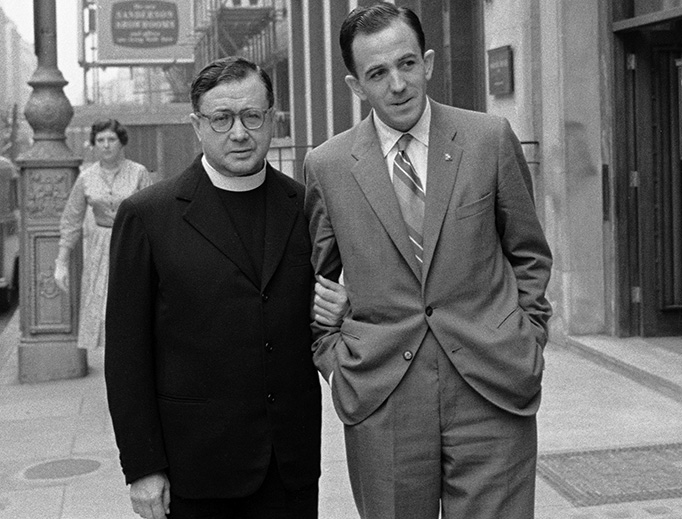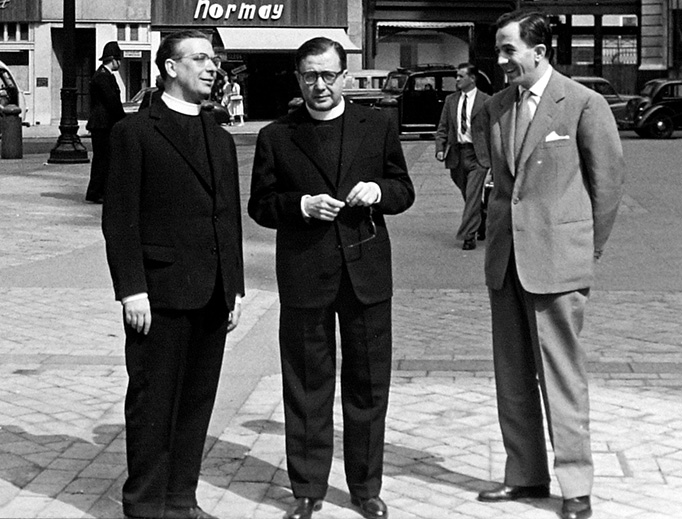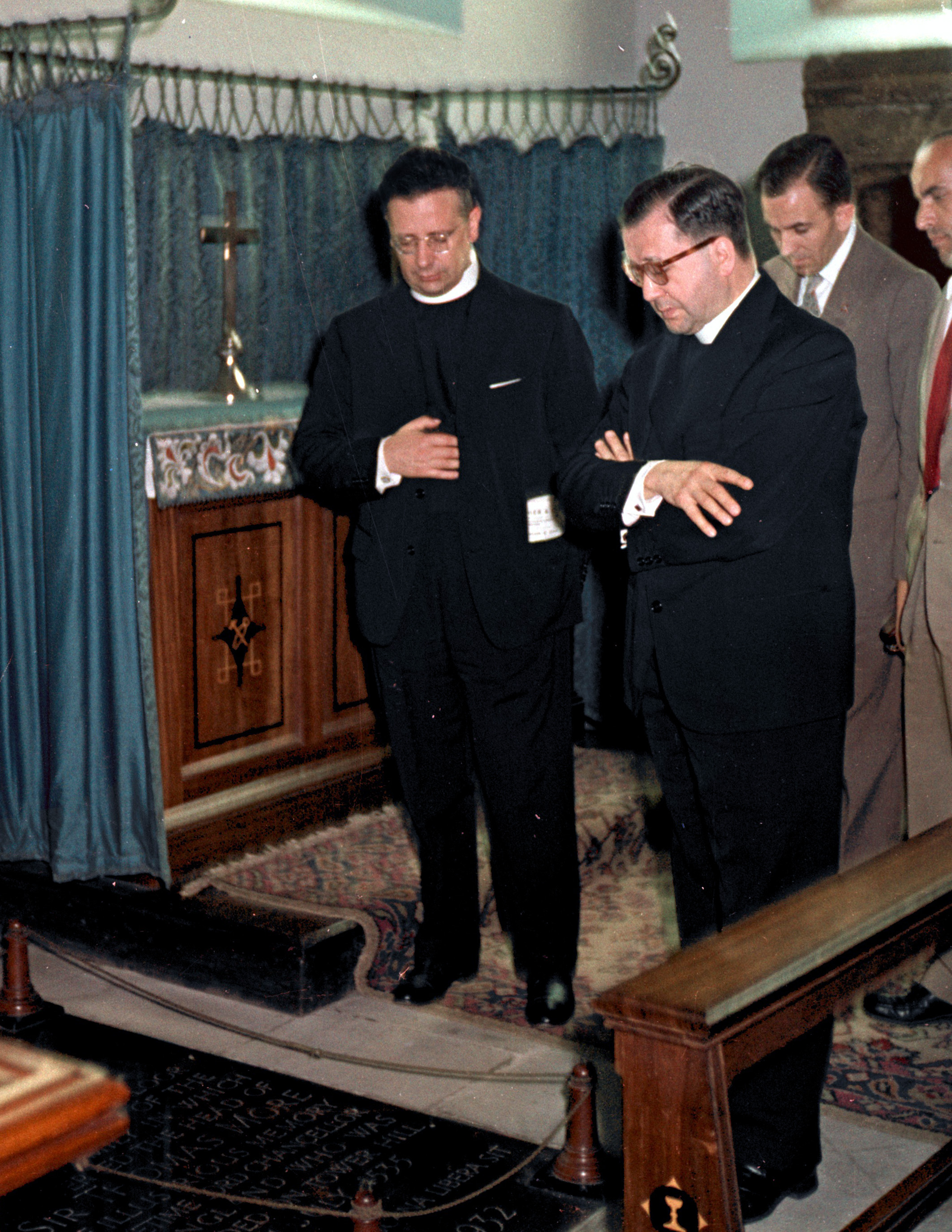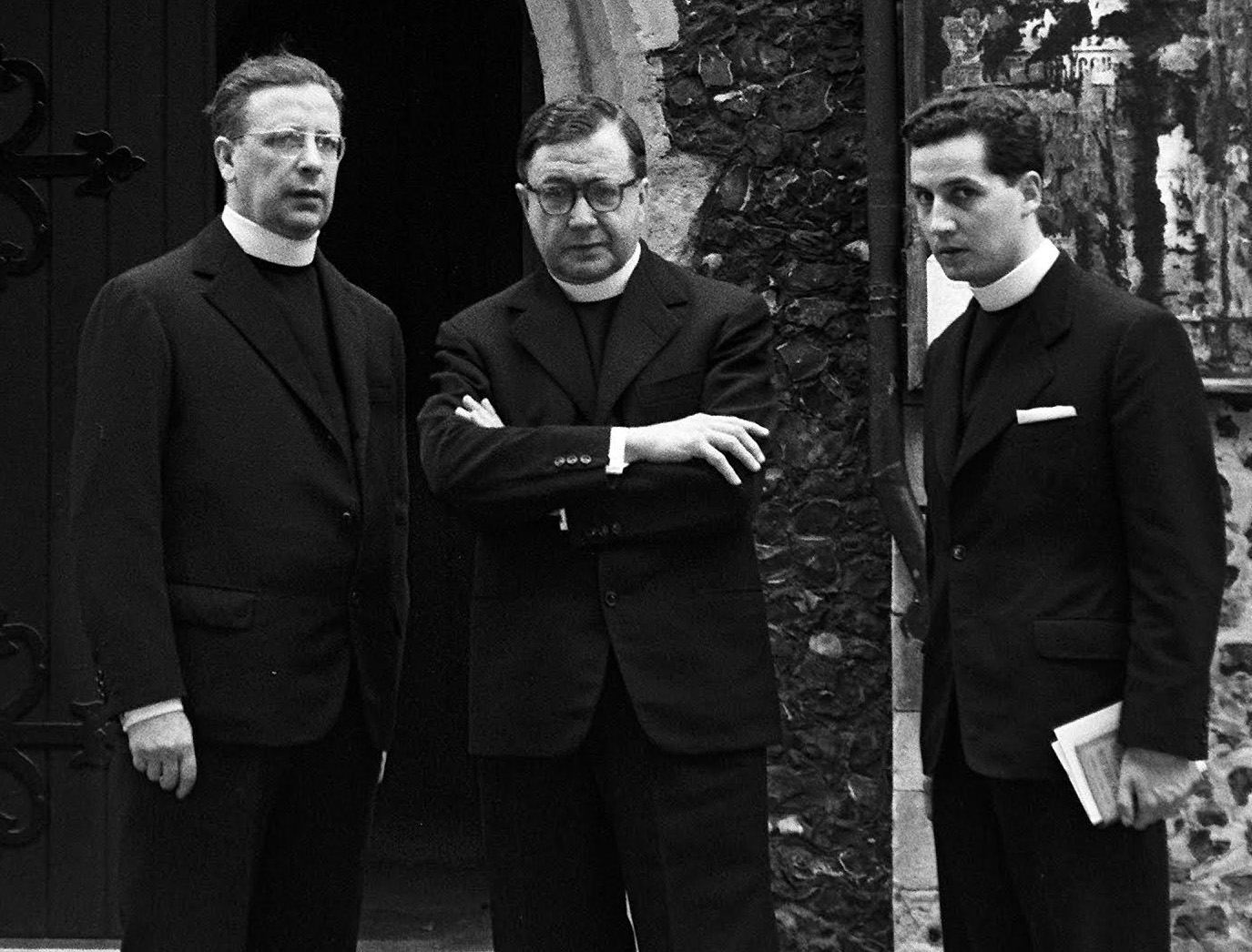St. Josemaría Escrivá Had a Special Love for England
Oct. 2, 2018, is the 90th anniversary of the beginning of Opus Dei. This summer marks the 60th anniversary of St. Josemaría’s first visit to England.

Just over 60 years ago a car drove from the English port of Dover to London. On board were two men, recently arrived in England. They had driven from Rome into France where they had boarded a ferry to Dover. Both were Spanish. Decades later both would be raised to the Altars of the Church.

Josemaría Escrivá and Álvaro del Portillo were not the first members of Opus Dei who had arrived in England. In the late 1940s the first Opus Dei members had come to live in Britain, but it is fair to say that these visitors were the most significant.
In July 1958, a letter arrived to those members of Opus Dei living in London. It said that Escrivá and del Portillo were coming to England, partly to rest and partly to escape the Roman sun. Preparations were quickly made to rent them a property in the Hampstead suburb of the city.
Escrivá arrived on Aug. 4 1958. He and the others with whom he traveled were surprised to find Dover quieter than they had expected. The day they had arrived, as it transpired, was a public holiday.

Soon, however, Escrivá and del Portillo were met by Opus Dei members based in London who took them to the capital, and to the house where they would stay until their departure on Sept. 17. That night, Londoners enjoyed the end of their holiday weekend. Cinemas in London showed: “A Night to Remember”; “The Bridge on the River Kwai” and the “The Ten Commandments” — the latter still playing even though it had premiered in London in November 1957. In the West End, the theatres were packed, as usual, to see such actors as Charles Laughton and Vivian Leigh; Rex Harrison was appearing in “My Fair Lady” with an up-and-coming star, Julie Andrews.
Escrivá had wanted to escape the heat of the Roman sun. Contemporary records state that the English weather did not disappoint his expectations: it was cold and damp. The summer climate must have suited the visitors as Escrivá would return again, as ever accompanied by del Portillo, in the summers of 1959 through to 1962. In addition to visits around London, he would also visit Manchester, and even cross the Irish Sea for a short visit to Ireland.

During these postwar years, living standards were slowly moving upward. There was full employment — in fact, there was, if anything, a labor shortage on account of the war. The Conservative Prime Minister, Harold MacMillan, had, only the previous year, told the nation that “they had never had it so good.” The country seemed to agree with his assessment, returning the Conservatives to power with an increased majority in the 1959 General Election.
Escrivá’s 1959 visit even provoked interest from The Times. A favorable profile appeared in the newspaper’s Aug. 20 edition. Seemingly, the later saint’s most striking characteristic was his “absolute normality,” which came as a surprise to the unnamed “Special Correspondent” who compiled the report.
Escrivá liked his visits to England in general, and to London in particular. He enjoyed walking the capital’s busy streets. There was one incident from Aug. 10, 1958, to which he would refer in later years. While walking in the City, London’s financial district, the future saint felt completely overwhelmed by his helplessness. He wondered, what impact could he make on the souls of this great city and all the power and wealth contained therein? It was then that he heard an inner voice, a locution.
Escrivá later recounted:
I somewhat lost my composure. I felt useless and powerless. Josemaría, you can’t do anything here… My whole miserable weakness was so apparent that I almost grew sad ... Suddenly, in the middle of the street, where people from all corners of the world were crossing paths, I felt within me, in the depth of my heart, the motion of God’s power.
I felt Him reassuring me: ‘You can do nothing, but I can do everything. You are weakness, but I am strength. I shall be with you, and that will have an effect. We shall lead souls to happiness, to unity, to the way of salvation. In the City of London, we shall sow peace and happiness in abundance.’
Today, there are many Opus Dei Centers dotted around London, as well as in Cambridge and Oxford, and Manchester. And there is a center, too, dedicated to bringing the message of the universal call to holiness in the City, not far from where, some 60 years ago, a future saint was reminded that God can do all things.
Here is a contemporary film of a drive around central London in the summer of 1958, showing the sights that the future saint would have seen:













